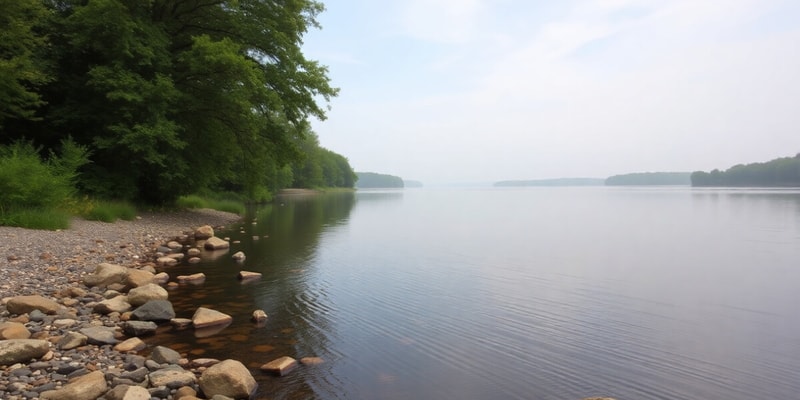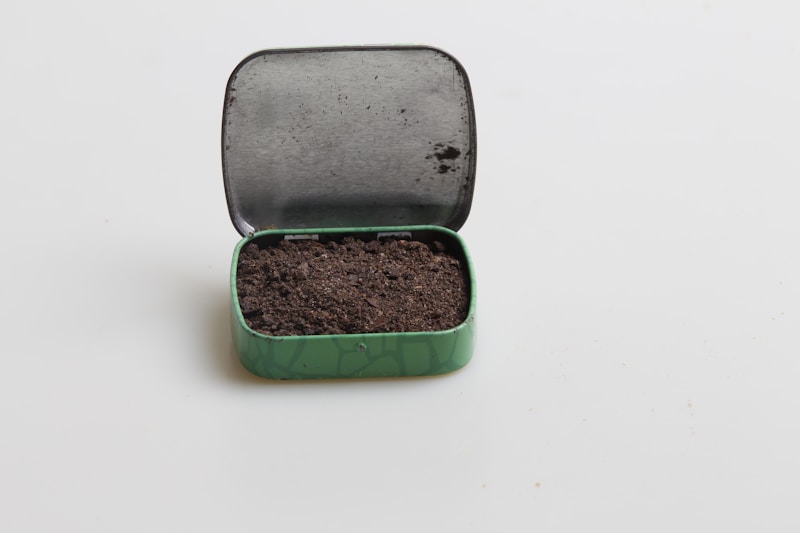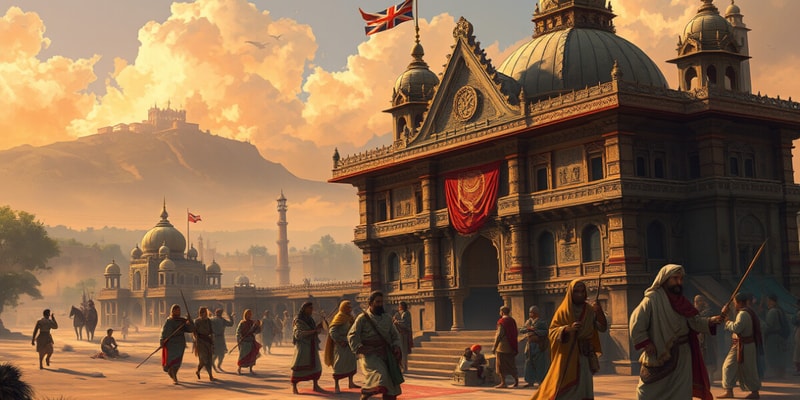Podcast
Questions and Answers
What is the primary cause of the mild climate experienced in Britain?
What is the primary cause of the mild climate experienced in Britain?
Which type of wind is predominantly responsible for the moist conditions in the British Isles?
Which type of wind is predominantly responsible for the moist conditions in the British Isles?
How does relief influence temperatures and precipitation in Britain?
How does relief influence temperatures and precipitation in Britain?
What characterizes the rainfall distribution in Britain?
What characterizes the rainfall distribution in Britain?
Signup and view all the answers
What is the average annual rainfall received by the eastern lowlands of England?
What is the average annual rainfall received by the eastern lowlands of England?
Signup and view all the answers
What contributes to the rarity of snowfall in Ireland?
What contributes to the rarity of snowfall in Ireland?
Signup and view all the answers
What is the average annual mean temperature in Scotland?
What is the average annual mean temperature in Scotland?
Signup and view all the answers
What weather conditions do north and north-west winds typically bring to northern Britain?
What weather conditions do north and north-west winds typically bring to northern Britain?
Signup and view all the answers
Which months are identified as the warmest in Great Britain?
Which months are identified as the warmest in Great Britain?
Signup and view all the answers
What percentage of the land in Great Britain is covered by woodlands?
What percentage of the land in Great Britain is covered by woodlands?
Signup and view all the answers
Which type of vegetation is predominantly found in the mountainous regions of Great Britain?
Which type of vegetation is predominantly found in the mountainous regions of Great Britain?
Signup and view all the answers
Which areas in Great Britain still preserve remnants of the natural vegetation?
Which areas in Great Britain still preserve remnants of the natural vegetation?
Signup and view all the answers
What is the total number of vascular plant species found in Great Britain?
What is the total number of vascular plant species found in Great Britain?
Signup and view all the answers
What feature is typical in the countryside landscape of England?
What feature is typical in the countryside landscape of England?
Signup and view all the answers
Which tree species is NOT mentioned as common in Great Britain?
Which tree species is NOT mentioned as common in Great Britain?
Signup and view all the answers
Which of the following trees is listed as one of the tallest species in Great Britain?
Which of the following trees is listed as one of the tallest species in Great Britain?
Signup and view all the answers
What primarily determines the direction and character of rivers in the British Isles?
What primarily determines the direction and character of rivers in the British Isles?
Signup and view all the answers
Which river is the largest in Great Britain by length?
Which river is the largest in Great Britain by length?
Signup and view all the answers
What climatic aspect is most influenced by the geographical position of the British Isles?
What climatic aspect is most influenced by the geographical position of the British Isles?
Signup and view all the answers
Which of the following lakes is the largest in the whole British Isles?
Which of the following lakes is the largest in the whole British Isles?
Signup and view all the answers
How are the major rivers in Britain primarily connected?
How are the major rivers in Britain primarily connected?
Signup and view all the answers
What is the significance of estuaries in British rivers?
What is the significance of estuaries in British rivers?
Signup and view all the answers
What is the defining feature of lakes in the British Isles?
What is the defining feature of lakes in the British Isles?
Signup and view all the answers
What best defines the climate of the British Isles?
What best defines the climate of the British Isles?
Signup and view all the answers
What is the oldest tree in Europe?
What is the oldest tree in Europe?
Signup and view all the answers
How many species of wildflower are particularly rare or vulnerable in Britain?
How many species of wildflower are particularly rare or vulnerable in Britain?
Signup and view all the answers
Which species are mentioned as extinct in the UK during the 20th century?
Which species are mentioned as extinct in the UK during the 20th century?
Signup and view all the answers
Which of the following mammal species is not included in the rodents that make up 40% of total mammal species in Great Britain?
Which of the following mammal species is not included in the rodents that make up 40% of total mammal species in Great Britain?
Signup and view all the answers
Which of the following deer species is the largest land-based wild animal today?
Which of the following deer species is the largest land-based wild animal today?
Signup and view all the answers
What has contributed to the loss of species in Great Britain?
What has contributed to the loss of species in Great Britain?
Signup and view all the answers
How many total bird species are found in Britain?
How many total bird species are found in Britain?
Signup and view all the answers
Which animal is not native to Britain but has been reintroduced?
Which animal is not native to Britain but has been reintroduced?
Signup and view all the answers
Study Notes
Rivers and Lakes
- The British Isles have a widespread network of rivers, mostly short but navigable in their lower reaches, especially during high tides.
- The mild maritime climate keeps rivers ice-free year-round.
- Most rivers flow eastward due to the mountainous west coast.
- British rivers form deep estuaries, preventing delta formation due to strong tides.
- A network of canals connects many rivers, facilitating inland water transport.
- The Severn (350 km) is Britain's longest river, flowing from central Wales to the Bristol Channel.
- The Thames (332 km) and the Trent (274 km) flow into the North Sea.
- Other important rivers flowing eastward to the North Sea include the Tees, Tyne, Tweed, Forth, Dee, and Spey.
- Rivers flowing into the Irish Sea include the Mersey, Eden, and Clyde, on which Glasgow stands.
- The Shannon (384 km) is the longest river in the British Isles, flowing from north to south in the Republic of Ireland.
- British lakes are generally small and remote, offering limited economic potential.
- Loch Lomond, the largest lake in Great Britain and biggest inland loch in Scotland, covers 70 sq.km.
- Lough Neagh (381 sq.km) in Northern Ireland is the largest freshwater lake in the British Isles.
- The Lake District in northwest England, featuring 16 long and narrow lakes among steep mountain slopes, is a popular tourist destination.
- Wastewater is the deepest lake, and Windermere is the largest lake in the Lake District.
Climate and Weather
- Weather in the British Isles is highly variable.
- Climate represents average weather conditions over a long period.
- The British Isles' geographical position between 50° and 61° N latitude is a key factor in determining its climate.
- The sea's influence dominates Britain's climate, making it milder than other countries at the same latitudes.
- The sea moderates temperatures, resulting in less seasonal contrast.
- Prevailing westerly winds, having traveled across the warm North Atlantic, bring moisture to the British Isles.
- North and northwest winds often bring heavy snow to northern Britain in October and November, but typically last for a short time.
- Continental winds from the east sometimes reach the British Isles in summer as warm and dry air, but are more common in winter, bringing cold weather to eastern and inland areas.
- Relief is the most important factor controlling temperature and precipitation distribution in Britain.
- Mountainous areas in the west and north receive significantly more rainfall (over 2,000 mm annually) than the lowlands in the south and east.
- The eastern lowlands are much drier, with areas like London receiving less than 700 mm annually and snow falling only 15-18 days per year.
- Rainfall is fairly well distributed throughout the year, with March to June being the driest months and October to January the wettest.
- Ireland's climate differs, with its rain-bearing winds retaining moisture, resulting in up to 1,200 mm of rainfall per year, often in the form of prolonged drizzle.
- Snow is rare in Ireland due to the warming effects of the Gulf Stream.
- The Gulf Stream and maritime air masses from the west keep temperature ranges modest throughout the year.
- England and Wales have an annual mean temperature of +10°C, while Scotland and Northern Ireland have +9°C.
- July and August are the warmest months, while January and February are the coldest.
- Sunshine distribution decreases from south to north, with the south experiencing much longer sunshine periods.
Vegetation and Landscape
- The British landscape is rich and varied, with noticeable contrasts within short distances, particularly on coastlines.
- Most of the land is agricultural, with over a third being arable, and the rest pasture and grazing.
- Woodlands cover about 8% of the country, with only a few scattered areas of extensive woodland remaining, such as the New Forest and Sherwood Forest.
- Present vegetation is heavily influenced by human activity.
- Remnants of natural vegetation are found in remote parts of Ireland and the Scottish Highlands.
- The original natural vegetation consisted of forests, fens, and marshes in the wet lowlands, and shrubs, heaths, and moorland on the uplands.
- Mountainous regions feature coniferous and mixed forests with pine, oak, and birch predominance.
- Woodland density is highest in northern and eastern Scotland, parts of southeast England, and the Welsh border.
- The most common trees are oak, beech, ash, and elm, replaced by birch pine, fir, and spruce in the north and on higher ground in the west.
- Midland Britain appears well-wooded due to numerous hedges and isolated trees.
- Hedges are a characteristic feature of England's countryside landscape.
- Britain's flora, though impoverished compared to continental Europe, includes 3354 vascular plant species, 2297 native and 1057 introduced.
- Native tree species include birch, beech, ash, hawthorn, elm, oak, yew, pine, cherry, and apple.
- Introduced trees, mainly from Europe and North America, include various pine, chestnut, maple, spruce, sycamore, fir, cherry plum, and pear trees.
- Douglas firs are the tallest species, with two specimens reaching 65 meters.
- The Fortingall Yew in Perthshire is Europe's oldest tree.
- Britain has at least 1500 different species of wildflowers, with 107 rare or vulnerable species protected by the Wildlife and Countryside Act 1981.
- Several wildflowers are specific to particular counties, such as red poppies, bluebells, daisies, daffodils, rosemary, gorse, iris, ivy, mint, orchids, brambles, thistles, buttercups, primrose, thyme, tulips, violets, cowslip, and heather.
- The island also has a wide diversity of algae, lichens, fungi, and mosses.
Animal Life
- Animal diversity in Britain is modest, influenced by factors such as the island's size, the relatively recent age of habitats, its separation from continental Europe, and seasonal variability.
- Industrialization and urbanization have contributed to species loss in Britain.
- Studies from 2006 suggest that 100 species became extinct in the UK during the 20th century, including the wolf, bear, boar, deer, and Irish elk.
- Some species, such as the brown rat, red fox, and introduced grey squirrel, are well-adapted to urban areas.
- Rodents make up 40% of Britain's mammal species, including squirrels, mice, voles, rats, and the reintroduced European beaver.
- Other mammals include rabbits, hares, hedgehogs, shrews, moles, and various bat species.
- Carnivorous mammals include badger, weasel, stoat, and the elusive wildcat.
- Foxes are prevalent in rural areas, and otters are found along rivers and streams.
- Various species of seal, whale, and dolphin inhabit British shores and coastlines.
- Deer are the largest land-based wild animals in Britain, with red deer being the largest species, followed by roe deer and fallow deer (introduced by the Normans).
- Habitat loss has affected many species, including extinct large mammals such as the brown bear, grey wolf, and wild boar (reintroduced in recent times).
- Britain has a wealth of birdlife, with 583 species recorded, 258 of which breed on the island or stay during winter.
Studying That Suits You
Use AI to generate personalized quizzes and flashcards to suit your learning preferences.
Related Documents
Description
Explore the rivers and lakes of the British Isles through this informative quiz. Learn about their characteristics, flow directions, and significant features including the longest rivers and interconnected canal systems. Test your knowledge on the geography of the region's waterways.




